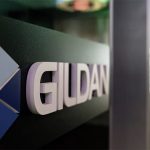S&P Global Ratings revised its debt ratings outlook on Under Armour to positive from stable. The rating agency said Under Armour’s credit measures remain strong due to its high demand, reduced promotional pricing and higher than normal cash balances.
S&P affirmed all of its UA ratings, including its ‘BB’ issuer credit rating, because it believes its S&P Global Ratings-adjusted leverage will likely remain below 3x.
The positive outlook reflects the potential that its rating will be raised over the next 12 months if the company meets its forecast and S&P is confident its financial policy will not become significantly more aggressive than it currently assumes.
S&P said in its analysis, “The outlook revision reflects our view that the pandemic has accelerated Under Armour’s pricing strategy to boost its brand image. Prior to the pandemic, the company embarked on a turnaround strategy to reduce the level of promotional pricing for its namesake brand, primarily in North America. To achieve this, management put less inventory into the system and became more strategic about its targeted customer base. That said, the pandemic has led to lean inventory levels for most apparel and footwear companies. This is due to the constant uncertainty and supply chain constraints related to the pandemic, which has caused retailers to order less inventory and led to less product reaching store shelves. The sector recovered faster than we originally anticipated because consumers quickly shifted their spending to products from services and away from activities after the initial lockdown shock of the pandemic led retailers to employ high promotional activity to clear their inventory. The ongoing uncertainty and indeterminate length of the pandemic have led to steady demand for Under Armour’s and its peers’ products, which are selling at their full price points given lean inventory levels. Therefore, the company is now better positioned to be strategic about its inventory levels and avoid returning to the heavy promotional pricing that previously eroded its brand equity.
“Given these dynamics, it is hard to discern if Under Armour’s success is sustainable. While we do not forecast that the favorable trends from 2021 will persist, we believe the company is better positioned to grow revenue and execute on its pricing strategy. Under Armour’s inventory levels were down 9 percent in 2021, relative to 2020, after being flat year over year in 2020. Due to elevated ocean freight costs and issues with procuring transit and labor, the company cannot sufficiently fill its inventory to meet demand. If demand trends reverse, we would expect Under Armour to continue to execute on its strategy and avoid adding inventory at heavy discounts to chase sales.
“We expect the company’s financial policy to remain conservative as it begins to utilize its abnormally high cash balance. Under Armour’s management is targeting leverage in line with that of its investment-grade peers, though it has not issued a formal financial policy target. We expect the company to repay the remainder of its initial $500 million notes when they become callable in December 2022, leaving it with $600 million of funded debt outstanding. We estimate Under Armour’s fiscal-year 2021 leverage (prior to the release of its annual filing) is under 1x due to its continued strong demand and $1.7 billion cash balance, which we net 95 percent of against its debt. However, we do not expect it to maintain its leverage at this level over the near- to medium-term because the company needs to make capital expenditure (Capex) investments that it delayed due to the pandemic-related uncertainty and volatility. Additionally, we believe management may use its excess cash for share repurchases, although no formal authorization exists. Under Armour may also use some of its cash to undertake tuck-in innovation, and/or expertise-based acquisitions, though we do not expect such activities to increase its reported debt balances. We forecast the company’s leverage will be near 2x over the next 12 months and anticipate any deterioration would stem from EBITDA erosion primarily caused by inflation.
“We expect Under Armour to continue to increase its revenue, though at a slower rate than in 2021. The current inflationary environment is pressuring consumer discretionary spending, though U.S. consumers still appear healthy from a savings perspective. However, we expect the return to travel and social activities to continue, which will cause consumers to diversify where they spend their extra money. Therefore, our base case assumes a low-single-digit percent expansion in the company’s overall revenue, mostly due to increased sales in international markets. According to the company, its brand reputation has not been harmed by the legacy challenges it faces in North America and continues to be viewed as a premium sportswear brand internationally. We believe the company’s international expansion and diversification will continue to be a major focus.
“Under Armour announced it increased its revenue by 27 percent in 2021, which was supported by a 40.8 percent rise in Europe, the Middle East, and Africa (EMEA), a 32.3 percent improvement in the Asia-Pacific region (APAC), a 29.4 percent gain in North America and an 18.5 percent expansion in Latin America. The key supports for the improvement in the company’s revenue were its sales of new products at higher prices (although lower than at Nike and Adidas) and fewer products sold through discount channels. It is hard to assess whether Under Armour can sustain its growth levels in North America, which were supported by the increased level of consumer spending due to pent-up demand, continued demand for athletic apparel over business attire, and the additional savings provided by government stimulus in 2021. However, we note the composition of the company’s business continues to evolve—including significantly reduced sales to the off-price channel, less promotional and discount activities, and a revamped brand marketing strategy—and that it has had success with its recent product launches. Additionally, Under Armour has refocused and is utilizing highly targeted digital advertising to attract its target performance athlete demographic. Maintaining its market share will depend on how well management’s merchandising and pricing strategies resonate with customers, as well as its ability to form successful endorsement relationships with high-profile athletes, such as Tom Brady and Stephen Curry. Lastly, we believe the ongoing trend toward casualization, along with the elevated consumer focus on health and wellness, will continue to support the demand for Under Armour’s products.
“We forecast the company’s profitability will decline in fiscal year 2023, though we expect less volatility going forward. We forecast Under Armour’s EBITDA margin will contract by about 300 basis points (bps) in fiscal year 2023 due to elevated costs for ocean and air freight and labor. We estimate the company’s EBITDA margin (prior to the release of its annual filing) is in the mid-teens percent area, which is lower than those of its larger direct competitors. Although we expect some contraction due to the current macroeconomic environment, we believe the brand’s improving performance and the new strategy will lead to less volatility (such as during 2016 to 2018, when the company’s EBITDA margins declined to the high-single-digit percent area from the mid-teens percent area while its revenue declined and it lost market share). We believe Under Armour will return to a more normalized level of expense management, including a healthy level of marketing spending. Given the company’s lower price point relative to that of its leading peers, we believe it has a greater ability to take pricing to offset inflation than its stronger peers. Under Armour is rounding out its current $525 million to $575 million restructuring program and we estimate another $60 million of costs in fiscal year 2023. In the past, the size of its restructuring programs and their frequency has also contributed to the volatility of its earnings.
“We apply a negative one-notch comparable rating analysis modifier to reflect the risks around the sustainability of Under Armour’s credit metrics because it has a large cash balance that will likely decline over the next fiscal year and lacks an external guided financial policy. There is also uncertainty around the current demand trends for the company’s products amid the ongoing macroeconomic headwinds related to the pandemic.
“The positive outlook reflects the potential that we will raise our rating on Under Armour over the next 12 months if it meets our forecast and we are confident its financial policy will not become significantly more aggressive than we currently assume.”
Photo courtesy Under Armour















